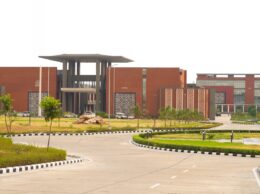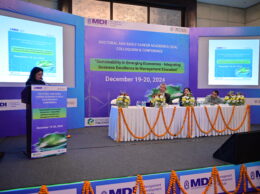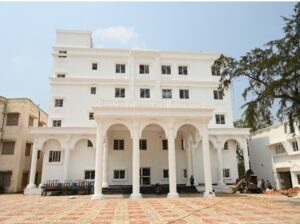Mandi, 4th November 2019: Indian Institute of Technology Mandi researchers have developed simple models to understand polymer looping processes using simple model. The researchers have built a theoretical model to understand the fundamental aspects of end looping mechanism in polymeric systems.
Polymers are ubiquitous in the world – including humans, who are a collection of various types of polymers, all that one eats, touches, feels and uses are polymers of one kind or another.
A research team led by Dr. Aniruddha Chakraborty, Associate Professor, School of Basic Sciences, IIT Mandi, is working in cutting-edge fields of Quantum and Statistical Mechanics and uses theoretical approaches to understand complex and critical chemical phenomena. His recent study has been published in the International Journal, Chemical Physics Letters. His student Ms. Moumita Ganguly is the corresponding author of that paper.
Explaining this research, Ms. Ganguly, said, “Polymers are not all isolated snake-like molecules thrown in together; they are often twisted, interconnected, overlapped and looped together in various forms, which give them their functionalities and uniqueness. Our approach will help us not only understand the importance of looping in biological processes but also assist in the development of nano-devices and molecular machines using polymers.”
End looping – contacts between ends of long polymers – is particularly rampant and important to biological polymers. The looping of our genetic polymer, DNA, is imperative to its function as carriers of our blueprint, and amino acids, the building blocks of proteins, must loop in order to serve the functions they are meant to serve.
While looping has been experimentally observed for a long time, the mechanisms of looping, including the speed at which they loop and rates of chemical reactions involving looped polymers have been difficult to understand because of the complexity and large size scales of these molecules. Computer simulations are extensively used in chemistry to understand how reactions proceed, but these are difficult in the case of looped polymers.
“Modeling the dynamics of such huge molecules using statistical and quantum tools requires extensive computer power”, added Ms. Ganguly, while talking on the need to develop easier and more general tools that can predict/explain looping in polymer systems.
“Certain chemical reactions happen very fast, within a fractions of a millisecond such that they are almost intractable during an experiment. To be able to see the speed of reactions involving looping, we framed a very simple one dimensional mathematical model in which simple parameters such as the length of the polymer, the relaxation time and the bond length can provide an idea of the kinetics involved”, Ms. Ganguly further explained.
The model was framed to simplify the multi-body nature of polymer looping and understand the effects of several parameters. The results of their study provide valuable insights into polymer looping kinetics, in addition to providing a simple way to simulate otherwise time consuming statistical mechanical calculations.
Experimental methods alone are insufficient to solve many of the questions in chemical and biological sciences. A synergy between theory and experiment is essential to gain meaningful insights into chemical and biological systems. “Our work provides this essential bridge between observations and reasoning”, says Ms. Ganguly, on the relevance of their modelling studies in the area of polymer science.









